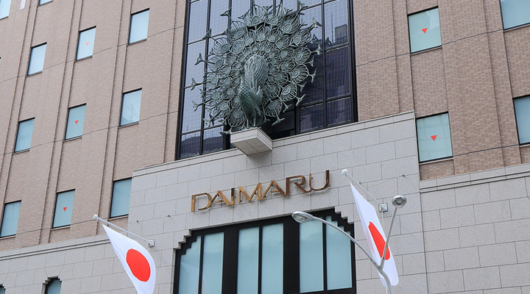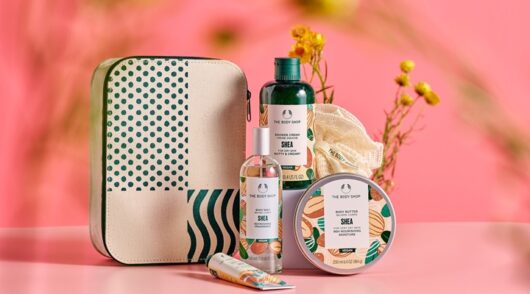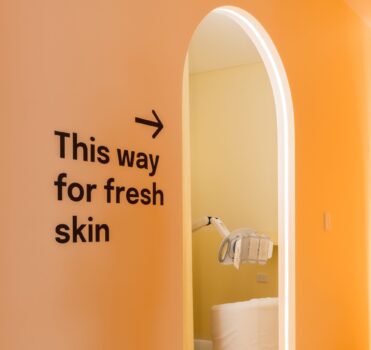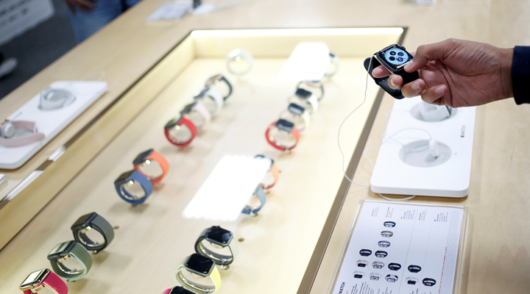
It’s that time of the year when we “crystal ball” what the future holds for Australia’s supermarket businesses. It is expected that 2020 will be a challenging year for supermarkets, framed by intense competition, increasing costs, emerging global competition, brand repositioning and an ever-changing shopper.
Sustainable competition
Full year results for 2019 illustrated relatively subdued sales, with Coles delivering comparable sales growth of 2.7 per cent (1.7% EBIT), Woolworths 3.3 per cent (3.8% EBIT) and Metcash-owned IGA just 0.3 per cent (-3% EBIT). Concerned by the over-reliance and impact of deep price promotions, supermarkets will gradually take their foot of the “discount pedal”, moving towards a consistent “better value proposition”. Such a move will see the stabilisation of sales and better price consistency for shoppers while improving bottom line EBIT.
Beyond 2020, shoppers will see less variable pricing and more consistent “value” offers.
Collectables are so 2019
The days are numbered for Disney Words, Little Shop 1 and 2, Ooshies, Discovery Garden and Christmas Pop-Outs. Despite successful and successive collectables promotions driving some of this sales growth, consumers have become fatigued looking for the next “big thing”. Coles CEO Steven Cain already indicated a move away from such programs. While we may no longer find miniature boxes of laundry powder or Lion King characters at the bottom of our green reusable shopping bags, there may be other forms of “gamification”.
Beyond 2020, we could expect to see supermarkets leverage location technology to facilitate a Pokémon Go-style collectibles hunt throughout the supermarket.
To grow, sometimes you need to shrink
Smaller, locally based format stores will become the norm. With Coles already announcing the roll out of 140 smaller format stores and Woolworths opening Australia’s first micro-format supermarket, we can expect to see such formats roll out quickly. A smaller footprint allows not just for a faster penetration, but also cost savings – lower rents, fewer parking requirements, fewer staff and less inventory. While Woolworths maintains their market leading micro-supermarket, located next to their WooliesX division in Surry Hills, Sydney, is for test purposes only, one would expect to see successful technologies roll out elsewhere.
Beyond 2020, we could expect “scan, tap and go” options in more busy CBD and inner-city stores.
Overcoming the last mile
Both Coles and Woolworths have reported massive growth in their online sales. Coles reported 30 per cent sales growth in Coles Online, generating $1.1 billion in sales, and achieving profitability for the first time in FY19. Similarly, Woolworths reported over the same time $2.534 billion in online sales and 31.6 per cent growth. Despite the efficiencies of online shopping, the challenges of the “last mile” and the inefficiencies of “picking and packing” remain. Both have attempted to implement tactics to overcome these barriers (i.e. teaming up with third-party providers like Drive Yello and Uber, to get deliveries to shoppers quickly, or outsourcing fulfillment to global powerhouses like Ocado). Woolworths looks to be leading the way here, entering into an exclusive partnership with US-based grocery start-up Takeoff Technologies to build automated micro-fulfillment centres in or next to existing stores at a fraction of the cost of large fulfillment centres.
Beyond 2020, expect to see micro-fulfillment centres in your suburbs. In older, larger format supermarkets, the walls will go up. Floor space will be reduced and behind the scenes, automated fulfillment will be taking place, facilitating faster delivery to customers’ homes.
The war is over
Ten years after Aldi first opened their doors in Australia in 2001, Coles finally became concerned about losing market share to the German low-cost grocer. On January 26 2011, Coles fired the first salvo in what would soon be dubbed the “supermarket price wars” by reducing the price of its own-brand milk to $1 per litre. Woolworths immediately responded.
Price wars represent one of the most severe forms of competitive interplay in the marketplace, often leading to great losses. Retailers suffer losses in terms of margins, consumer loyalty and an inability to pull out of the downward cycle.
The surprise exit of Kaufland from the Australian market will take the pressure off Coles, Woolworths, Aldi and IGA. While prices are not expected to lift significantly, we won’t see significant price discounting. Instead, incumbent supermarkets will be competing on their points of difference – loyalty programs, online, smaller format, local food and convenience.
Beyond 2020, supermarket price wars will come to a close and incumbent players shift to a stronger value proposition and convenience offer.
IGA reconnects with the community
IGA and Foodland businesses have been facing the perfect storm over the past decade. Increased price competition, Coles and Woolworths rolling out smaller format convenience-style stores, the growth in online grocery shopping and the restrictions of a franchise business model. After years of promoting “price matching” and “locked down pricing”, finally IGA are returning to focus on their core strength – the community and local food. Their more recent television advertising that speaks to local small producers and customers looking for unique (Irish Blue Cheese) and local products will resonate with shoppers.
Beyond 2020, expect to see IGA continue to reposition itself as Australia’s true independent food retailer, focused on supporting local communities, producers and brands.
Exploiting the premium market
The entry of Aldi and a decade of “price wars”, has produced a price-conscious consumer who regularly switches between supermarket brands seeking the lowest price. While the growth of discounter-style grocers continues to outperform supermarkets globally, the “premium” market in Australia appears ripe for exploitation and signals the ever-changing face of the Australian food and grocery landscape. Masstige (mass-prestige) has become one of those phrases bandied around in the marketing world for some time now. Masstige refers to goods that are mass-produced or relatively inexpensive to produce, but that are marketed as “prestigious” or more “luxurious” to an aspirational audience. While David Jones has taken the lead with their food halls and more recent collaboration with BP, expect others like Coles to follow with their premium local offerings.
Beyond 2020, in select “high disposable income” suburbs, expect to see supermarket-owned premium food halls and liquor merchants.
Private label to grow
Aldi has legitimised supermarket private label products and Australian shoppers have become more trusting of these “no-name” brands. As such, incumbent players have invested millions of dollars improving the quality of their own products. Private label products, produced under contract for supermarkets, enable grocers to retail these products below the price of branded alternatives. Such products also make it incredibly difficult for competitors to directly compare and compete on a like-for-like basis. In Australia, private label products currently account for 18.1 per cent of all retail dollar sales. The proportion is similar in North America (17.7%). This is significantly less than supermarkets in other countries. Private label products account for 41 per cent of supermarket sales in the UK, 42 per cent in Spain, 36 per cent in Germany and between 27 and 32 per cent in most other European countries. However, recent announcements indicate Australian supermarkets will follow a UK model, moving toward 40 per cent penetration.
Beyond 2020, shoppers will still find global brands like Coca-Cola, Cadbury and Nescafé; however, smaller, local brands may struggle to find space between these global brands and the supermarkets’ own brands. A welcomed opportunity for IGA to leverage.
Corporate social responsibility
“We care” is the message supermarkets want shoppers to understand. All supermarkets have strengthened this aspect of their business over the past few years – increasing Indigenous employment rates, and developing community partnerships like SecondBite and Redkite. In 2015, Coles established the Nurture Fund to support small and medium-sized Australian businesses to innovate and grow. Similarly, Woolworths launched their Responsible Sourcing Program in July 2018, while removing over 600 tonnes of plastic packaging from fruit, vegetables and bakery products last year. IGA has been a national donor to Foodbank since 2010, during which time they have donated almost 2 million kilos of food and groceries, as well as giving staff the opportunity to volunteer at Foodbank warehouses. In 2020 we can expect to see these directions continuing to play an important role for supermarkets.
Beyond 2020, expect to see a strategic pivot from community to the environment, specifically around issues pertaining to drought, sustainability and community resilience.
Waste not, want not
Food waste will continue to be an important issue for supermarkets – not just from an environmental (landfill) perspective, but also from a cost perspective. It costs money to order, receive, replenish and manage inventory, so it is better to sell it than throw it out. All incumbent grocers have worked hard to reduce food waste, implementing a number of initiatives, like donating to food charities, active food waste diversion programs and circular economy tactics such as Woolworths’ “bread” beer. More recently Coles announced the launch of their “ugly food” program, “I’m Perfect”, following Woolworths “Odd Bunch” program.
Beyond 2020, expect to see these “ugly” fruit and vegetables more front and centre, and supermarkets being more creative with the circular economy – for example, soups and juices made from blemished fruits and vegetables.
Gary Mortimer is a professor in marketing and international business at Queensland University of Technology. This story was first published in the 2020 Outlook issue of Inside FMCG magazine. Subscribe here.





